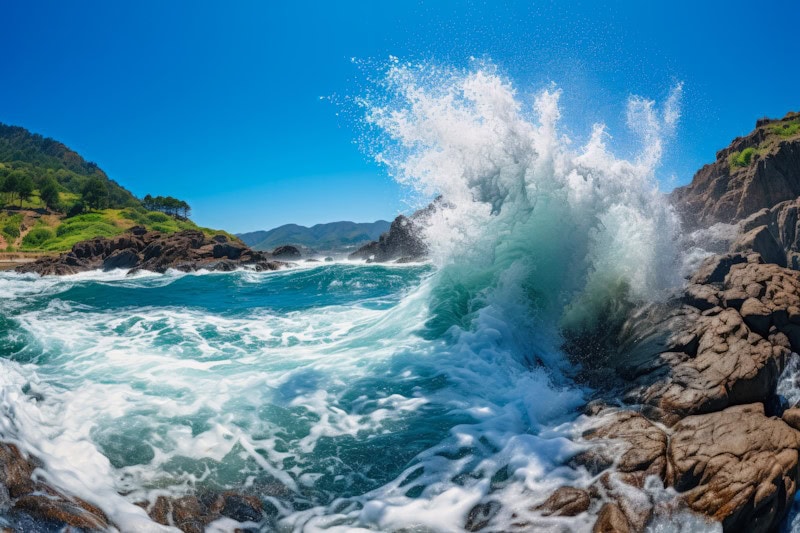
Mangroves are often celebrated for their unique ability to thrive in challenging coastal environments, but their contributions extend far beyond providing habitat for marine life and protecting shorelines from erosion. These remarkable trees are also critical players in the fight against climate change, thanks to their exceptional ability to sequester carbon.
In this article, we’ll delve into how mangroves contribute to global carbon sequestration, the mechanisms behind their effectiveness, and the broader implications for conservation efforts.
What Is Carbon Sequestration, and Why Is It Important?
Carbon sequestration is the process of capturing and storing atmospheric carbon dioxide (CO2). It is a vital mechanism for mitigating the effects of climate change by reducing the amount of CO2 in the atmosphere, which is a major contributor to global warming. While various ecosystems can sequester carbon, mangroves are particularly efficient at this process.
Mangroves as Blue Carbon Ecosystems
Mangroves, along with seagrasses and salt marshes, are classified as “blue carbon” ecosystems. These ecosystems are distinguished by their ability to capture and store carbon in both their biomass (leaves, stems, and roots) and in the soil beneath them. In fact, mangroves are so efficient that they can sequester carbon at rates three to five times higher than tropical rainforests.
- ✅ Good: Mangroves are highly efficient at sequestering carbon, making them a powerful tool in the fight against climate change.
- ❌ Bad: The destruction of mangroves releases stored carbon back into the atmosphere, contributing to greenhouse gas emissions.
🛑 Mangrove Fact: Despite covering less than 1% of the Earth’s surface, mangrove deforestation contributes about 10% of global carbon emissions.
How Mangroves Sequester Carbon
Mangroves sequester carbon through two main pathways: in their biomass and in the soil. The biomass of mangroves, which includes the leaves, branches, and roots, directly absorbs CO2 from the atmosphere. But the real carbon storage powerhouse lies in the soil.
The Role of Mangrove Soil
Mangrove soil is rich in organic material, much of which is carbon. The unique root systems of mangroves trap organic matter, which is then buried and protected from decomposition by the anaerobic (low-oxygen) conditions of waterlogged soils. This creates a long-term carbon sink, where carbon can remain stored for centuries or even millennia.
- ✅ Good: Mangrove soils can store vast amounts of carbon over long periods, reducing atmospheric CO2.
- ❌ Bad: When mangroves are destroyed, the carbon stored in the soil is released, contributing to climate change.
🛑 Fun Fact: Mangroves can store up to four times more carbon per unit area than terrestrial forests, making them one of the most effective carbon sinks on the planet. Here’s a cool article we wrote on learning about the different Mangrove Plant Aquarium Substrates.
The Global Significance of Mangrove Conservation
Given their efficiency in sequestering carbon, the conservation and restoration of mangrove forests are critical for global climate change mitigation. Mangrove conservation not only helps to store carbon but also prevents the release of carbon stored in existing mangrove ecosystems.
The Impact of Mangrove Loss
Mangrove forests are under threat from coastal development, agriculture, and aquaculture. When mangroves are cleared, the carbon stored in their biomass and soil is released back into the atmosphere as CO2, exacerbating global warming.
In my experience as an aquarium enthusiast and mangrove grower, the loss of mangroves has tangible impacts not just on the environment but also on local communities that rely on these ecosystems for protection against storms and as a source of livelihood.
🛑 Mangrove Fact: The destruction of mangrove forests is responsible for up to 10% of deforestation-related emissions, despite mangroves making up just 0.7% of the global forest area.
Restoration Efforts and Their Benefits
Restoration projects aim to replant mangroves in areas where they have been lost. These projects are crucial not only for carbon sequestration but also for restoring the biodiversity and ecosystem services that mangroves provide.
- ✅ Good: Mangrove restoration can reverse the damage caused by deforestation, restoring carbon sinks and providing habitat for wildlife.
- ❌ Bad: Restoration efforts are often costly and require long-term commitment to be effective.
At Save Mangroves Nursery, we are committed to supporting these global conservation efforts by providing healthy, live Red Mangrove plants that are ready to be added to aquariums across the country. Whether you’re a seasoned aquarium enthusiast or a beginner, our mangroves can make a beautiful and impactful addition to your tank, contributing to the global fight against climate change.
Mangroves in Aquariums: A Small-Scale Contribution with Big Impacts
While the primary focus of mangrove conservation is on large-scale ecosystems, cultivating mangroves in aquariums can also play a role in carbon sequestration. Mangroves in aquariums absorb CO2 through photosynthesis and store it in their biomass. Although the scale of carbon sequestration in an aquarium is much smaller, it still contributes to the overall effort.
The Benefits of Growing Mangroves in Aquariums
Aside from their contribution to carbon sequestration, mangroves in aquariums offer several benefits. They help to stabilize water conditions by absorbing excess nutrients, provide habitat for aquatic life, and add a unique aesthetic to your tank.
- ✅ Good: Growing mangroves in aquariums helps to stabilize water conditions and provides habitat for marine life.
- ❌ Bad: Without proper care, mangroves in aquariums can struggle to thrive, reducing their effectiveness in carbon sequestration.
In my own experience, growing mangroves in aquariums has been a rewarding journey. Not only do these plants enhance the overall health and appearance of my tanks, but they also serve as a daily reminder of the importance of conservation.
Challenges and Opportunities in Mangrove Conservation
While the benefits of mangrove conservation are clear, there are challenges that must be addressed to ensure their long-term survival. Coastal development, pollution, and climate change are just a few of the threats facing mangrove ecosystems today.
Good vs Bad: The Future of Mangroves
- ✅ Good: Increased awareness and global conservation efforts are helping to protect and restore mangrove forests.
- ❌ Bad: Ongoing threats like coastal development and climate change could accelerate the loss of mangrove ecosystems.
💡 Fun Fact: Mangroves act as natural barriers against storms and erosion, protecting coastal communities and infrastructure from damage.
Mangroves are more than just coastal trees; they are vital players in the global effort to combat climate change. By sequestering carbon at impressive rates, mangroves help to reduce atmospheric CO2 and mitigate the effects of global warming.
By growing mangroves in your aquarium, you are not only enhancing the beauty and health of your tank but also participating in the global fight against climate change.
Every mangrove plant counts, and together, we can make a difference. Whether you’re a seasoned aquarium enthusiast or just starting out, our mangroves can make a meaningful addition to your collection while supporting the broader goal of conservation.
How Do I Choose My Very First Plant?
So you have learned about the incredible benefits of adding mangrove plants to your tank, but you still don’t know which exact plant to add to your specific tank size?
Don’t worry, because we’ve created an easy Step-by-Step guide to help you with your selection process.
Click the button below to find out which plant is perfect for your aquarium.

 Cart is empty
Cart is empty 
